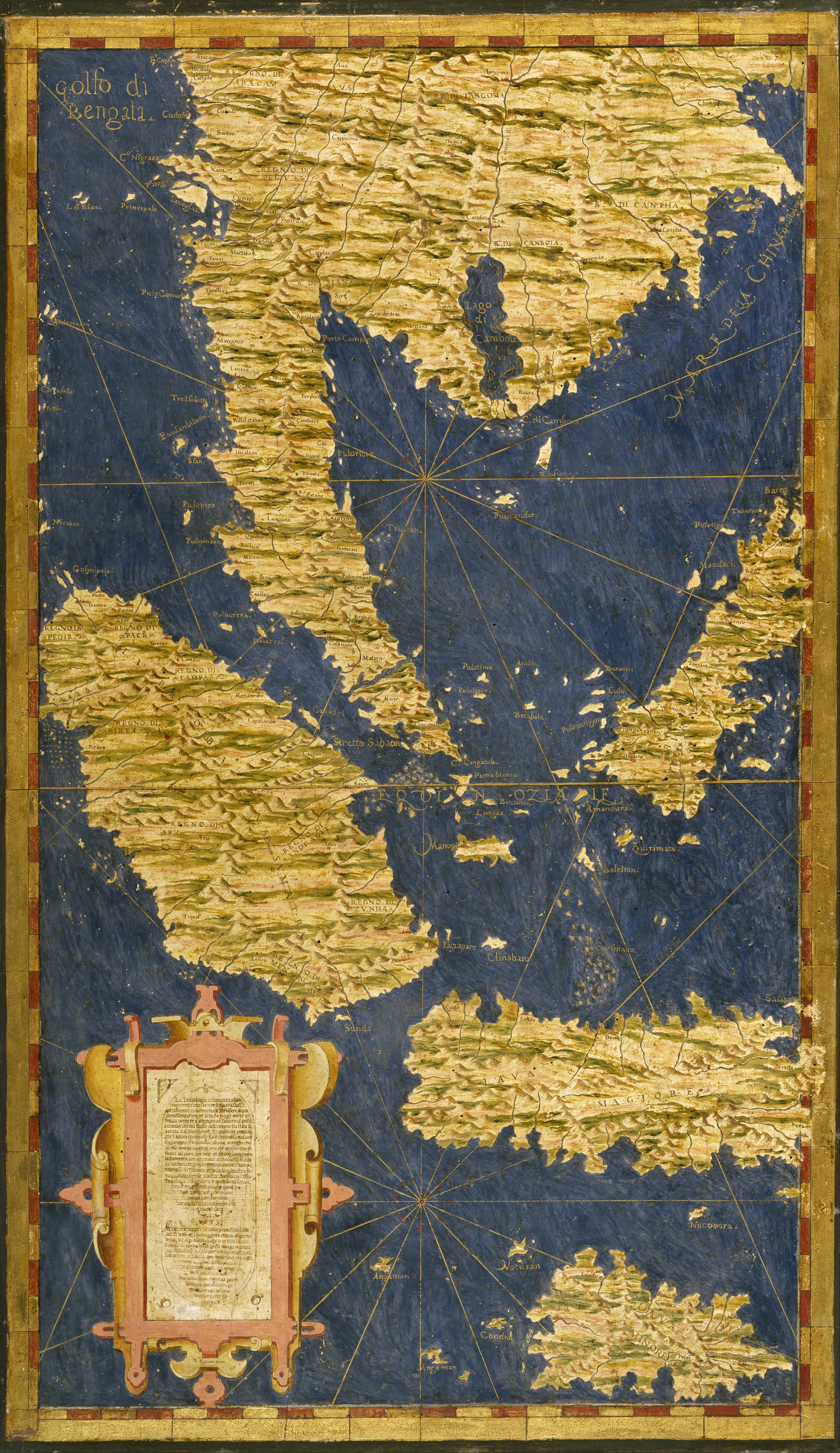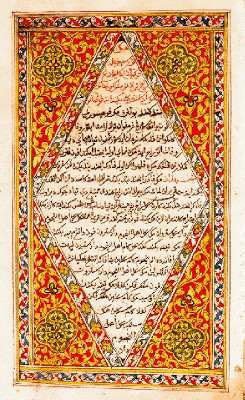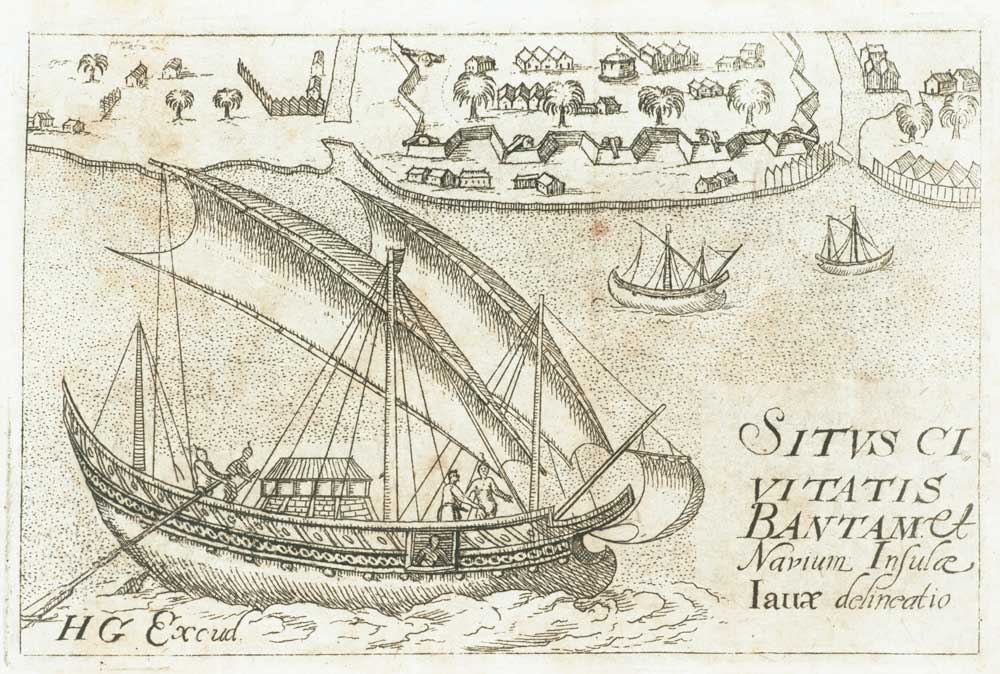|
Cerucuh
Cerucuh (also written as cheruchoh, charochah, cheruchup, cerucah, and cerucup) is an ancient, small Malay trading boat. One of the earliest record of cerucuh has a background of 14th century, being mentioned in Malay Annals which was composed no earlier than 17th century, being used by Majapahit empire during the first Majapahit attack on Singapura (1350). Malay Annals recorded: ''Maka betara Majapahitpun menitahkan hulubalangnya berlengkap perahu akan menyerang Singapura itu, seratus buah jung; lain dari itu beberapa melangbing dan kelulus, jongkong, cerucuh, tongkang, tiada terhisabkan lagi banyaknya''. So the king of Majapahit ordered his war commander to equip vessels for attacking Singapore, a hundred jong; other than that a few melangbing and kelulus; jongkong, cerucuh, tongkang, all in uncountable numbers.See Muljana (2005). p. 65 and Nugroho (2011). p. 271, quoting ''Sejarah Melayu'', 5.4: 47. See also * Kelulus * Jongkong * Pelang Pelang or pilang is a traditional ... [...More Info...] [...Related Items...] OR: [Wikipedia] [Google] [Baidu] |
Majapahit Empire
Majapahit ( jv, ꦩꦗꦥꦲꦶꦠ꧀; ), also known as Wilwatikta ( jv, ꦮꦶꦭ꧀ꦮꦠꦶꦏ꧀ꦠ; ), was a Javanese Hindu-Buddhist thalassocratic empire in Southeast Asia that was based on the island of Java (in modern-day Indonesia). It existed from 1293 to circa 1527 and reached its peak of glory during the era of Hayam Wuruk, whose reign from 1350 to 1389 was marked by conquests that extended throughout Southeast Asia. His achievement is also credited to his prime minister, Gajah Mada. According to the () written in 1365, Majapahit was an empire of 98 tributaries, stretching from Sumatra to New Guinea; consisting of present-day Indonesia, Singapore, Malaysia, Brunei, southern Thailand, Timor Leste, southwestern Philippines (in particular the Sulu Archipelago) although the scope of Majapahit sphere of influence is still the subject of debate among historians. The nature of Majapahit relations and influences upon its overseas vassals, and also its status as an empi ... [...More Info...] [...Related Items...] OR: [Wikipedia] [Google] [Baidu] |
Kingdom Of Singapura
The Kingdom of Singapura (Malay: ''Kerajaan Singapura'') was an Indianised Malay Hindu-Buddhist kingdom thought to have been established during the early history of Singapore upon its main island Pulau Ujong, then also known as Temasek, from 1299 until its fall in 1398. Conventional view marks as the founding year of the kingdom by Sang Nila Utama (also known as "Sri Tri Buana"), whose father is Sang Sapurba, a semi-divine figure who according to legend is the ancestor of several Malay monarchs in the Malay World. The historicity of this kingdom based on the account given in the ''Malay Annals'' is uncertain, and many historians only consider its last ruler Parameswara (or Sri Iskandar Shah) a historically attested figure. Archaeological evidence from Fort Canning Hill and the nearby banks of the Singapore River has nevertheless demonstrated the existence of a thriving settlement and a trade port in the 14th century. The settlement developed in the 13th or 14th century and ... [...More Info...] [...Related Items...] OR: [Wikipedia] [Google] [Baidu] |
Jongkong
A jongkong is a type of dugout canoe from Maritime Southeast Asia. ''Jongkong'' was the simplest boat from Riau-Lingga area, and can be found widely though in small numbers throughout the area. The first record of ''jongkong'' comes from the Malay Annals (which was composed no earlier than the 17th century AD), being used by Majapahit empire during the first Majapahit attack on Singapura (1350) and during the fall of Singapura (1398).Nugroho (2011), p. 271, 399–400, quoting ''Sejarah Melayu'', 10.4: 77: "... ''maka bagindapun segera menyuruh berlengkap tiga ratus buah jung, lain dari pada itu kelulus, pelang, jongkong, tiada terbilang lagi''." (then His Majesty immediately ordered to equip three hundred jong, other than that kelulus, pelang, jongkong in uncountable numbers.) Etymology The name comes from two words, that is ''jong'' and ''kong'' or ''jegong''. ''Jong'' means a boat or sampan, no matter large or small, while ''kong'' or ''jegong'' is the place where masts are ... [...More Info...] [...Related Items...] OR: [Wikipedia] [Google] [Baidu] |
Tongkang
Tongkang or "Tong'kang" refers to several type of boats used to carry goods along rivers and shoreline in Maritime Southeast Asia. One of the earliest record of tongkang has a background of 14th century, being mentioned in Malay Annals which was composed no earlier than 17th century. One passage mentioned it as being used by Majapahit empire during the 1350 attack on Singapura. Etymology Because the majority of tongkangs were built, used, and manned by Chinese people, it is frequently assumed that the name was Chinese word. In fact, ''"tongkang"'' is certainly a Malay word, and probably derived from ''bělongkang'' (properly ''përahu bèlongkang'', a ''pěrahu jalur'' with strakes added to increase the freeboard), a word which was formerly used in Sumatra for a river cargo boat. Description The tongkang was an unmotorised open cargo boat, propelled by a variety of methods, including rowing, punt poles and sail. The early tongkangs were about 20 ton burthen or less; the ... [...More Info...] [...Related Items...] OR: [Wikipedia] [Google] [Baidu] |
Jongkong
A jongkong is a type of dugout canoe from Maritime Southeast Asia. ''Jongkong'' was the simplest boat from Riau-Lingga area, and can be found widely though in small numbers throughout the area. The first record of ''jongkong'' comes from the Malay Annals (which was composed no earlier than the 17th century AD), being used by Majapahit empire during the first Majapahit attack on Singapura (1350) and during the fall of Singapura (1398).Nugroho (2011), p. 271, 399–400, quoting ''Sejarah Melayu'', 10.4: 77: "... ''maka bagindapun segera menyuruh berlengkap tiga ratus buah jung, lain dari pada itu kelulus, pelang, jongkong, tiada terbilang lagi''." (then His Majesty immediately ordered to equip three hundred jong, other than that kelulus, pelang, jongkong in uncountable numbers.) Etymology The name comes from two words, that is ''jong'' and ''kong'' or ''jegong''. ''Jong'' means a boat or sampan, no matter large or small, while ''kong'' or ''jegong'' is the place where masts are ... [...More Info...] [...Related Items...] OR: [Wikipedia] [Google] [Baidu] |
Malay Annals
The ''Malay Annals'' (Malay: ''Sejarah Melayu'', Jawi: سجاره ملايو), originally titled ''Sulalatus Salatin'' (''Genealogy of Kings''), is a literary work that gives a romanticised history of the origin, evolution and demise of the great Malay maritime empire, the Malacca Sultanate. The work, which was composed sometime between the 15th and 16th centuries, is considered one of the finest literary and historical works in the Malay language. The original text has undergone numerous changes, with the oldest known version dated May 1612, through the rewriting effort commissioned by the then regent of Johor, Yang di-Pertuan Di Hilir Raja Abdullah. It was originally written in the Classical Malay on traditional paper in old Jawi script, but today exists in 32 different manuscripts, including those in Rumi script. Notwithstanding some of its mystical contents, historians have looked at the text as a primary source of information on past events verifiable by other historical ... [...More Info...] [...Related Items...] OR: [Wikipedia] [Google] [Baidu] |
Djong (ship)
The djong, jong, or jung (also called junk in English) is a type of ancient sailing ship originating from Java, Indonesia that was widely used by Javanese, Sundanese, and later Malay sailors. The word was and is spelled ''jong'' in its languages of origin, the "djong" spelling being the colonial Dutch romanization. Djongs are used mainly as seagoing passenger and cargo vessels. They traveled as far as the Atlantic Ocean in the medieval era.Carta IX, 1 April 1512. In Pato, Raymundo Antonio de Bulhão; Mendonça, Henrique Lopes de (1884). Cartas de Affonso de Albuquerque, Seguidas de Documentos que as Elucidam tomo I' (pp. 29–65). Lisboa: Typographia da Academia Real das Sciencas. Their tonnage ranged from 40 to 2000 deadweight tons,The tonnage used in this page (unless stated otherwise) is DWT or deadweight tonnage, a measure of how much cargo a ship can carry, including the weight of passenger and supplies. with an average deadweight of 1200–1400 tons during the Majapahit era ... [...More Info...] [...Related Items...] OR: [Wikipedia] [Google] [Baidu] |
Melangbing
Malangbang or melambang is a type of medieval sailing ship from Indonesia. It is mentioned mainly in the History of Banjar. The name "malangbang" is considered to originate from the Old Javanese language, ''malabong'' (''malaboṅ'') which refers to a particular type of boat. Malangbang is one of Majapahit's main naval vessel types after jong and kelulus.Hill (June 1960). "Hikayat Raja-Raja Pasai". ''Journal of the Malaysian Branch of the Royal Asiatic Society''. 33: p. 98 and 157: "Then he directed them to make ready all the equipment and munitions of war needed for an attack on the land of Pasai – about four hundred of the largest junks, and also many barges (malangbang) and galleys." See also Nugroho (2011). p. 270 and 286, quoting ''Hikayat Raja-Raja Pasai'', 3: 98: "''Sa-telah itu, maka di-suroh baginda musta'idkan segala kelengkapan dan segala alat senjata peperangan akan mendatangi negeri Pasai itu, sa-kira-kira empat ratus jong yang besar-besar dan lain daripada itu banya ... [...More Info...] [...Related Items...] OR: [Wikipedia] [Google] [Baidu] |
Kelulus
Kelulus or kalulus is a type of rowing boat used in Indonesia. It is typically small in size and propelled using oar or paddle. However, for long-distance voyages, this boat can be equipped with sails. It is not the same as ''prahu kalulis'' of the eastern part of the Indonesian archipelago. Etymology The name ''kelulus'' seems to be derived from Javanese word "''lulus''", which means "to go right through anything". According to Hobson-Jobson, the literal translation would be "the threader". Description The earliest report of kelulus is from ''Hikayat Raja-Raja Pasai'' (Chronicle of the Kings of Pasai) of the 14th century, in which they are mentioned as one type of vessel used by the Majapahit empire. Although they are not well described, kelulus is one of Majapahit's main vessel types after jong and malangbang.Hill (June 1960). " Hikayat Raja-Raja Pasai". ''Journal of the Malaysian Branch of the Royal Asiatic Society''. 33: p. 98 and 157: "Then he directed them to make ready ... [...More Info...] [...Related Items...] OR: [Wikipedia] [Google] [Baidu] |
Kelulus
Kelulus or kalulus is a type of rowing boat used in Indonesia. It is typically small in size and propelled using oar or paddle. However, for long-distance voyages, this boat can be equipped with sails. It is not the same as ''prahu kalulis'' of the eastern part of the Indonesian archipelago. Etymology The name ''kelulus'' seems to be derived from Javanese word "''lulus''", which means "to go right through anything". According to Hobson-Jobson, the literal translation would be "the threader". Description The earliest report of kelulus is from ''Hikayat Raja-Raja Pasai'' (Chronicle of the Kings of Pasai) of the 14th century, in which they are mentioned as one type of vessel used by the Majapahit empire. Although they are not well described, kelulus is one of Majapahit's main vessel types after jong and malangbang.Hill (June 1960). " Hikayat Raja-Raja Pasai". ''Journal of the Malaysian Branch of the Royal Asiatic Society''. 33: p. 98 and 157: "Then he directed them to make ready ... [...More Info...] [...Related Items...] OR: [Wikipedia] [Google] [Baidu] |
Pelang
Pelang or pilang is a traditional boat from Indonesia and Malaysia. It may refer to several different types of boats in the Nusantara, but commonly they refer to an outrigger canoe. The function differs from where they were used, from transporting people, fishing, to trading. Pilang has been known from at least the 14th century. Etymology The name "pelang" can be traced from Old Javanese word ''pelang'' which means freight boat or a type of ancient merchant boat. The Great Indonesian Dictionary (KBBI) explains it as a "trading boat". According to M. Rafiek, a pelang is a rather large boat used to sail through the Java sea. In northern Sulawesi, it was originally a term for a ''mahera'' boat (''mahera'' means dugout—the base keel made from a whole piece of hollowed wood), but with the entry of Filipino technology (see vinta), then a boat made of plywood can also be referred to as a pelang. Description In the western part of Nusantara, it refers to a large, flat-bottomed ca ... [...More Info...] [...Related Items...] OR: [Wikipedia] [Google] [Baidu] |
.jpg)








